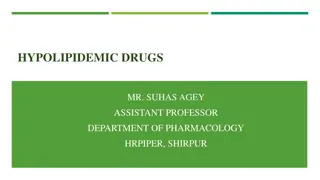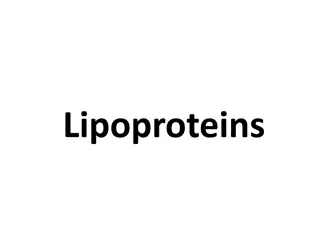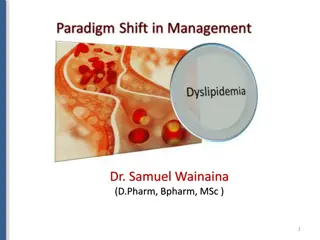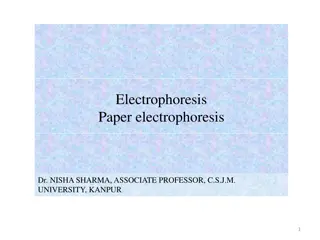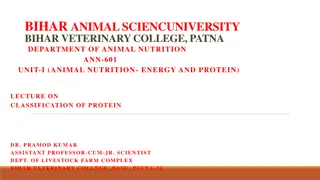HYPOLIPIDEMIC DRUGS
Major lipids like cholesterol and triglycerides play essential roles in the body, but their excess can lead to hyperlipidemia and related conditions. This overview covers the biosynthesis of cholesterol, triglycerides, and the transport of lipids in the bloodstream, discussing the importance of lipo
1 views • 30 slides
Understanding Lipoproteins: Structures and Functions
Lipoproteins are compound lipids formed by the aggregation of neutral and amphipathic lipids with proteins (apoproteins). They serve as vehicles for transporting lipids through the bloodstream and lymphatic system, acquiring polarity due to their hydrophilic properties. These macromolecules are synt
0 views • 51 slides
Understanding Lipid Compounds and Their Physiological Significance
Explore the world of lipid compounds and their vital roles in the body, including serving as a major energy source, structural components of cell membranes, and key regulatory molecules. Learn about various types of lipids, such as fatty acids, phospholipids, and lipoproteins, and their relevance to
0 views • 24 slides
Understanding Dyslipidemia and Lipoprotein Disorders
Plasma lipids are transported in complexes called lipoproteins. Dyslipidemia, characterized by elevated cholesterol, triglycerides, or low HDL cholesterol, is a major risk factor for cardiovascular diseases. Learn about lipid metabolism, dyslipidemia management approaches, and the role of pharmacy p
0 views • 32 slides
Understanding Paper Electrophoresis in Biochemistry Research
Paper electrophoresis is a powerful technique used in biochemistry to separate charged particles like proteins based on their migration along a filter paper strip. This method, conducted by Dr. Nisha Sharma, an Associate Professor at C.S.J.M. University in Kanpur, involves applying samples to the pa
0 views • 17 slides
Classification of Proteins in Animal Nutrition: Simple Proteins vs. Conjugated Proteins
Proteins in animal nutrition are classified into two main groups: simple proteins and conjugated proteins. Simple proteins can be further divided into fibrous and globular proteins based on their shape, solubility, and chemical composition. Fibrous proteins, such as collagens, elastin, and keratins,
0 views • 18 slides
